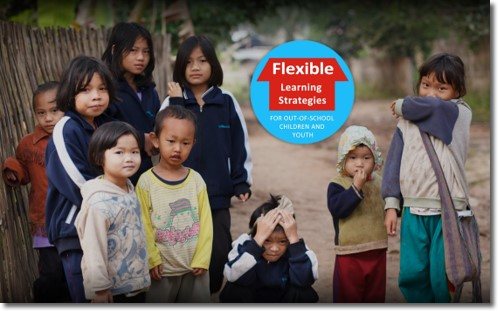WHY WE SHOULD HELP?
Young And Out Of School

Data by UNESCO 2017
For many children around the world, a walk to school of up to three hours in each direction is not uncommon. This caused a significant obstacle for many children, particularly children living with a disability, children from poor household that are suffering from malnutrition or illness, or those who are required to work around the household. Imagine having to set off for school, hungry, at 5 a.m. every day, not to return until 7 p.m. Many children, especially girls, are also vulnerable to violence on their long and hazardous journeys to and from school.
The issue of out-of school children (OOSC) remains a pervasive global problem, as evidenced by the 124 million OOSC in the world; around 14.3 million of them living in East Asia and the Pacific, in Southeast Asia (excluding Brunei Darussalam and Singapore), over 6.8 million of primary and secondary school age are out of school.
POVERTY
Poverty denies children and young people of their right to a quality education and a better future. School age children for primary to upper-secondary education from the poorest wealth quintile are nearly four times more likely to be out of school than those of the same age from richer families or from cities. Poverty is also a factor, keeping them from owning any means of transport that allows children to go to school due to the distance from the rural villages to schools.
Across Asia especially South Asia, non-attendance in schools are among the poorest households and all these confirm what previous studies have observed about the poverty gap. The distance to schools presents a great obstruction to these children as poverty do not allow them the luxury in owning a bicycle or have access to any mode of transportation.

Ratio of out-of-school children and young people among different socio-economic groups.
DISTANCE
A simple walk to school can be extremely unsafe or intimidating for some children. Many parents are unwilling to allow their children, particularly girls to walk long distances to school or take routes that could be dangerous in case they are harassed or sexually abused. An estimated 246 million girls and boys are harassed and abused on their way to and at school every year - with girls particularly vulnerable.
Many children in remote communities also have to trek unimaginably long journeys every day to access education, or just to be in school on time.

HARSH DISCIPLINE
Teachers also agreed some students walked more than 10 kilometres to school which constituted a huge obstacle for poorer students living in the rural areas. Children who arrive late are often punished by their teachers for not complying with the school’s regulations, normally with strikes or slash grass. But some students have to walked more than 10 kilometres or two hours to schools, and the punishment is also a factor for these children skip school altogether.
In many cases, adolescence brings challenges that interfere with education. Girls face barriers that include child marriage, gender-based violence, inadequate water, sanitation, and hygiene, and the heavy burden of household chores. For boys, barriers range from pressure to earn money to stereotypes around masculinity that encourage truancy.

The distance from home to school is one of the reasons that over 20 million children are out of school in Asia and the Pacific says UNESCO.
A bicycle allows them to get to school and they can take one and sometimes two of their siblings with them.
The students’ families can also use the bikes to get to clinics and to local markets.
An example in Viet Nam, surveys in six provinces revealed that some lower secondary students were enrolled in school, but then dropped out because the schools were over 10km away and they could not afford to have a bicycle or the bus fare (UNICEF & UIS 2014b).
Financial barriers such as the inability of poor families to pay for the direct and indirect costs of schooling, one of which is inaccessibility of schools due to distance.
Educational pathways of upper secondary school age adolescents by gender.

Despite the provision of school facilities to primary and junior secondary schools in rural areas, OOSC still occurs.
We have to consider in taking steps to ensure programs are set up to increase education for children in rural areas such as providing transport to those who travel long distances.
We have to prevent school-leaving by offering an alternative mode to children to stay in school.
